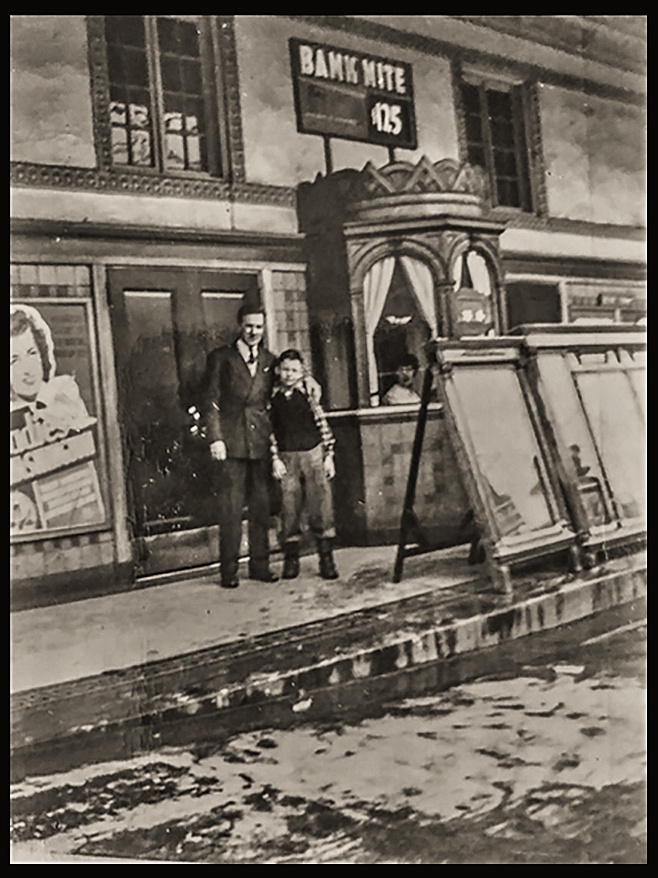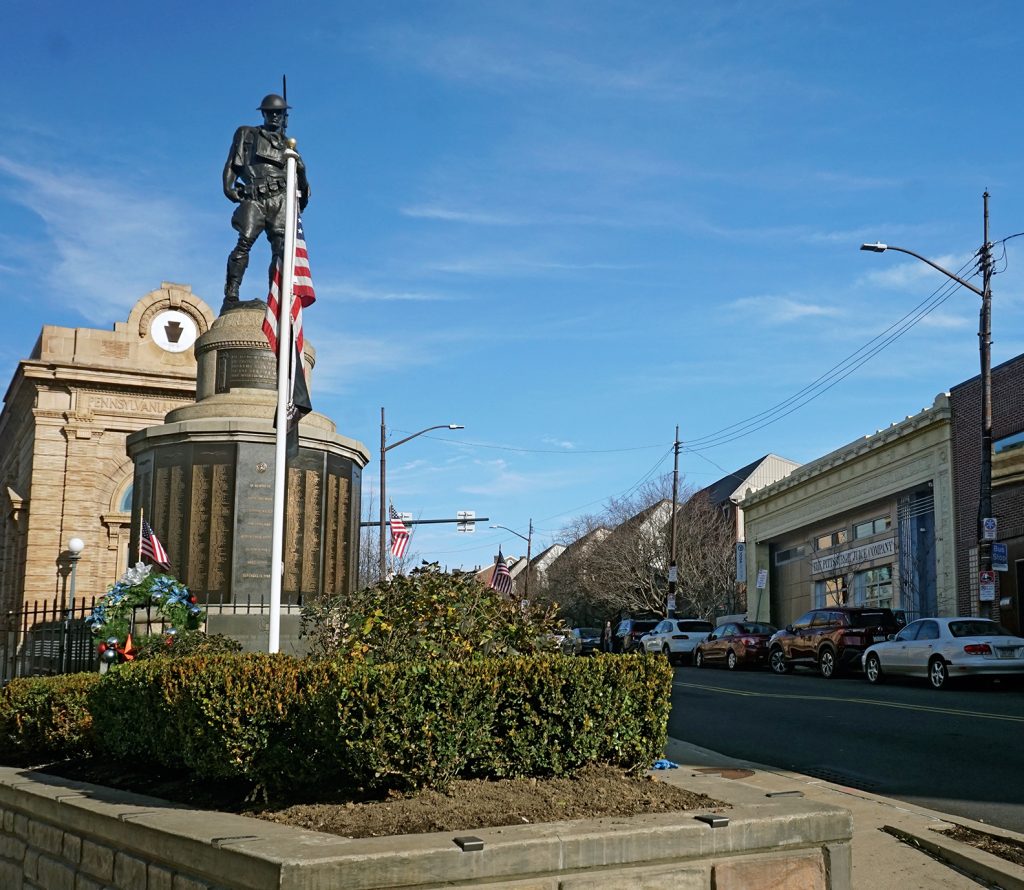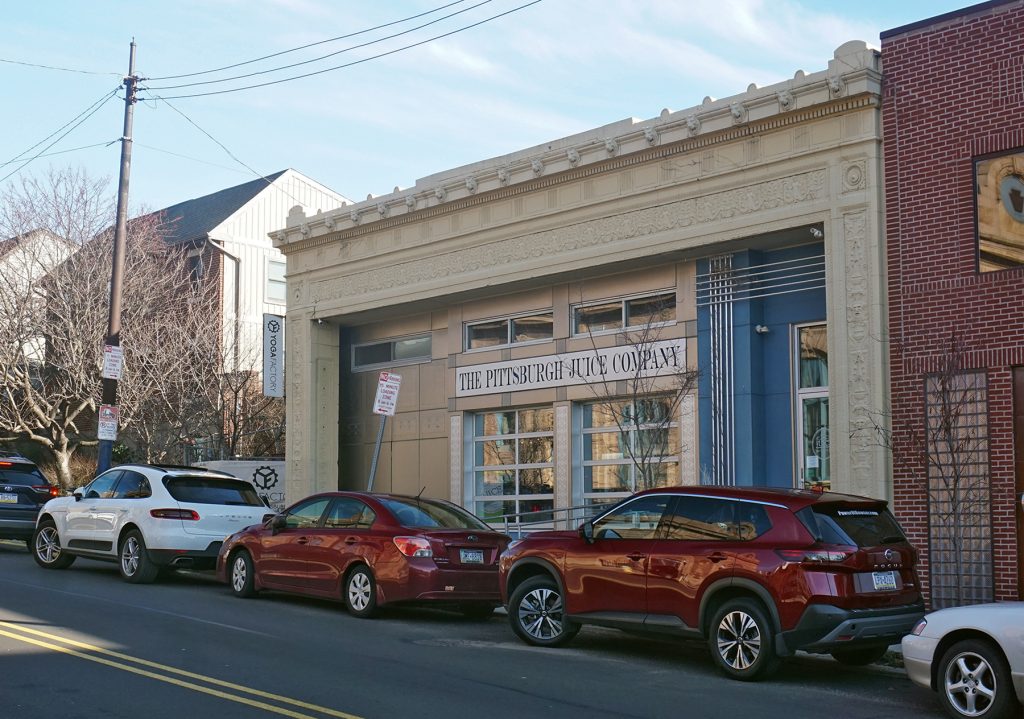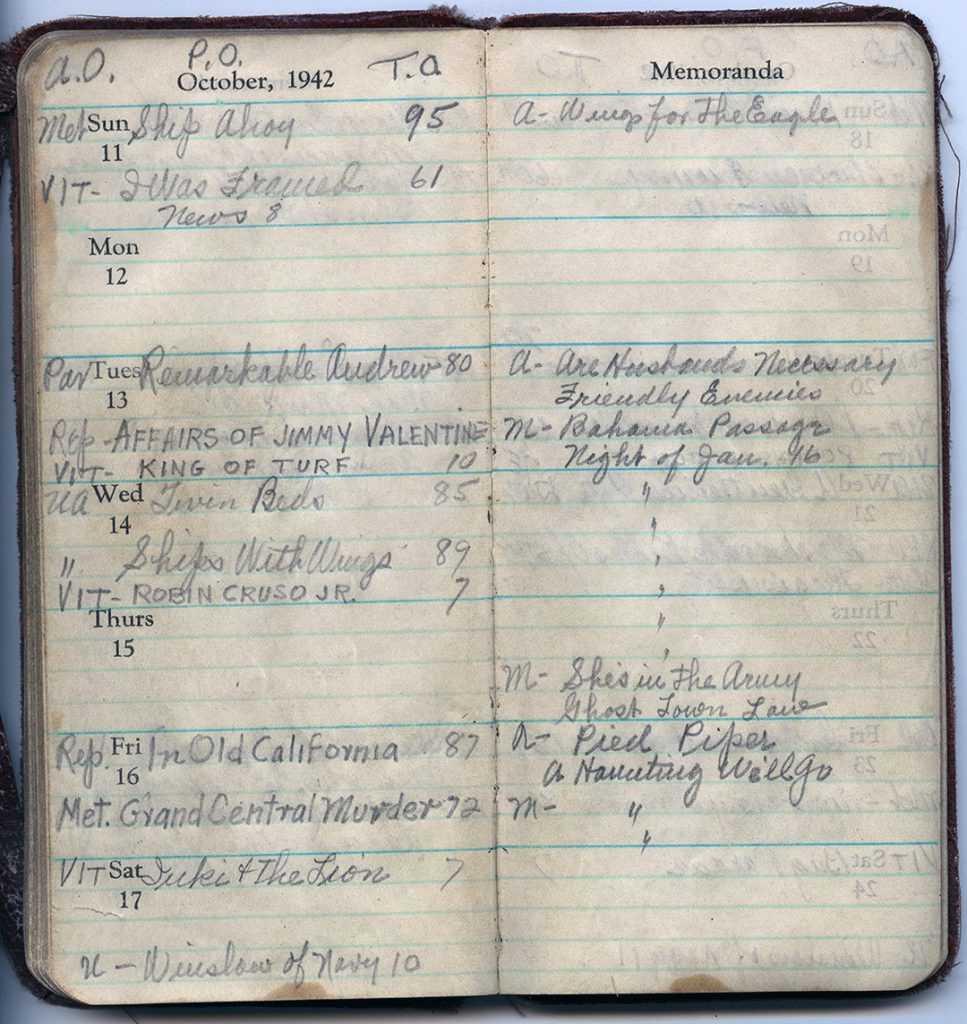
by Paul Roth
The principal business of my branch in the Roth Family was the Penn, a moving picture theater owned and operated by my grandfather, Israel (Joe) Roth.
This was not the “big” Penn Theater, the major stage and screen venue on the northwest corner of Sixth Street and Penn Avenue in Downtown Pittsburgh (now Heinz Hall). This was the “little” Penn Theater in the city’s Lawrenceville neighborhood, across from the doughboy statue at 3414 Penn Avenue—just east of Butler Street.
It was a modest venue: a single-floor auditorium, separated from the lobby by a curtain. A lone candy machine in the lobby offered such treats as Raisinets, Milk Duds, and Good & Plenty licorice. Outside, a minimal marquee framed the box office. We are lucky to have a 1944 snapshot of the Penn, sent to me by my cousin Carol Horowitz, for which I’m very grateful. My uncle Ben Siegal and I, age 12, are pictured outside the entrance. A funny quirk was that the building was a block and a half from a bridge that carried a Baltimore and Ohio rail line across Penn Avenue. It occasionally imparted to the theater some pronounced jarring and rattling.
An undated clipping, circa 1950, says H.J. Heinz built the Penn in 1915 for operation by his friend, a Mr. Artsburger; my grandfather took over in 1924. The article, titled “Israel Roth, Pittsburgh Exhibitor 25 Years, Leases Penn; Retires,” announced Grandpa’s retirement and transfer of the theater to the Shea Theatre Company that operated the Fulton downtown. The theater presented second- (or sometimes third-) run films accompanied by an assortment of serials, newsreels, and weekly contests such as “bank night.”
Over my youth, the personnel of the Penn remained constant: Walter, the manager; Peggy, the ticket seller; and Mister Michelosky, the projectionist. Besides that staff, Grandpa’s son—my uncle Jerry Roth—had a big role in promoting, developing, and modernizing the theater. Before and after World War II (in which he served as a decorated transportation officer), he introduced many technological innovations and improvements to its operation.
On innumerable visits to my grandparents and some extended stays, I “inhabited” the theater and got to know it intimately, including trips upstairs to the projection room with its acrid odor of burning projection lamps. I use the term “inhabited” because many of my visits accompanied Grandpa Joe and lasted for hours. In essence, Gene Autry, Roy Rogers, Dick Tracy, the Green Hornet, Tarzan, and other screen characters became my babysitters.
I also recall the route from home to the theater that my grandfather always took in his 1939 Pontiac, Negley Ave. to Friendship St. to Liberty Ave. to Penn Ave.


Another advantage of associating with Grandpa was occasional trips to the neighborhood called “Film Row,” where the major movie studios had sales offices and screening facilities. There, I got to see new films and acquire many brochures and trade magazines, such as BOXOFFICE. What remains of this enclave is the marquee of the restored Paramount Film Exchange building, which still displays the studio’s stunning logo above the entrance facing the Boulevard of The Allies.
One of my souvenirs of the theater was Grandpa’s pocket schedule notebook for 1942, which, in his precise script, listed the entire year’s presentations, including feature and short films and audience-participation events. There was also a complete listing of the presentations at the theater’s principal competitors, the Model (Bloomfield) and the Arsenal (Lawrenceville). Several years ago, I donated this precious relic to the History Center.

The last time I was in the neighborhood, I was pleased to see the building that housed the theater still stands, partly restored, now home to The Pittsburgh Juice Company.
Paul Roth is a regular contributor to Western Pennsylvania History, the History Center’s quarterly magazine.
